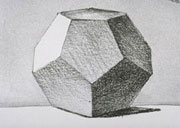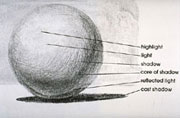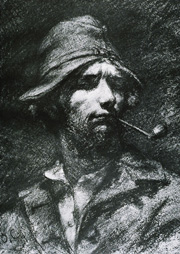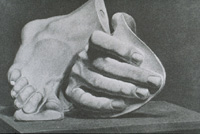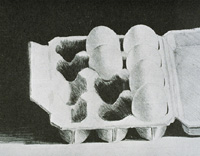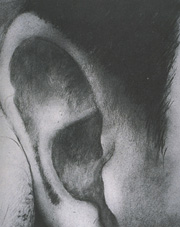
| Value | ||
|
For example, if we look at each plane of the hexagonal volume to the right, each has a value different from the other. Theoretically, the values are all different because each plane has a distinct and unique relationship to the light conditions. |
||
| When our volume becomes a sphere, we see that the planes of the hexagon meld into a smoothed-out surface of an infinite number of indistinguishable planes. Theoretically again, the sphere should then display an infinite number of values.
The more values we describe, the more descriptive we can be of forms as a whole. |
. | |
Note that the darkest dark in the drawing of the sphere occurs in the cast shadow. Also note that the lightest light is the white of the page. Once we establish the two extremes of light and dark, we can pull out a full range of values between them. |
||
In the examples below, examine the range of values (darkest dark to lightest light), the consistency of light across the page, and the legibility of forms relative to the light source or sources. Where is light coming from and which planes face the light and which face away? |
||
